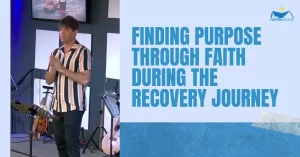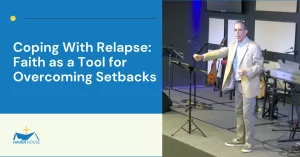
Table of Contents
There are two major types of substance abuse disorder: alcohol abuse disorder and drug use disorder.
Some people abuse both alcohol and drugs, while others are dependent on one or the other. However, the United States’ fastest-growing drug problem isn’t heroin, cocaine, or methamphetamines. It’s prescription drugs that are affecting many people’s lives.
There are lesser-known substances rampant in the United States and the rest of the world. Many of these drugs originate in laboratories with unregulated production processes and chemical ingredients.
As a strong advocate for substance abuse treatment, Haven House Recovery Center is here to shed light on lesser-known substances. Learn more about these substances to prevent abuse and help those who may already be affected by them.
What Is Substance Abuse?
Substance use disorder refers to the continued use of alcohol or other drugs that causes clinical or functional impairment.
Impaired coordination, sudden weight loss, legal trouble, neglect of responsibilities—these are just a few signs that your loved one might be struggling with a drug use disorder. Although substance use disorders can be severe, treatment options are available.
What Are the Causes of Substance Use Problems?
Substance abuse can often begin in childhood or early adolescence. Sometimes, people use it to feel better or just out of curiosity. Recurrent use and an increased tolerance can lead to addiction.
Adults with substance use disorder may also have a co-occurring mental disorder such as anxiety, depression, or bipolar disorder. In these cases, they turn to drugs or alcohol to help them cope.
The following are other risk factors that could lead to the use of psychoactive drugs:
- Financial difficulties
- Tense home environment
- Chronic pain
- Relationship issues
- Addiction in the family
- Death of a loved one
- Long-term tobacco use
- Lack of attachment to parents
While none of these risk factors guarantee that someone will develop an addiction, repeated use of substances and other factors increase its likelihood.
5 Interesting Facts About Addiction
Of course, drug use—either prescription or illegal—doesn’t automatically lead to substance abuse. Some people can take prescription and recreational drugs safely without experiencing any adverse effects.
To know more about substance use disorder, here are some facts about substance abuse:
1. Drug addiction is an involuntary behavior.
The person may start as an occasional user of drugs. It is a voluntary decision. However, as time goes by, something happens, and the individual becomes addicted to the substance.
Over time, addictive drugs will change the brain—in subtle and dangerous ways. However, an individual will almost always experience compulsive or uncontrollable drug cravings.
2. Substance use disorder is a disease.
All types of drugs have their unique mechanism of changing the brain’s function. However, regardless of what drug an individual is addicted to, their detrimental effects on the brain are the same: changes in mood, brain chemistry, and memory processes.
One of the many facts about substance abuse can profoundly affect one’s behavior. Changes in behavior happen because drug addiction has altered the brain and its function in crucial ways. Drug abusers find drugs to be their single greatest motivator.
3. Treatment doesn’t have to be voluntary for it to succeed.
It doesn’t necessarily have to be voluntary for treatment to be effective. People forced into treatment by their families, employers, or the legal systems are just as likely to succeed as those who opt to receive treatment on their terms.
Many addicts who were once resistant to treatment now feel more open-minded and able to think once they begin to cleanse their system from the substance.
4. Drug treatment is a process.
Recovering from drug addiction can be a complicated process with many setbacks. This is one of the many interesting facts about addiction, as others view relapse negatively.
Relapse does not mean that treatment is failing or that sobriety has been abandoned. However, one should see this as a sign to get back on track.
5. Addiction recovery can start anytime.
Last but not least, on the facts about substance abuse, you can start recovery at any stage of the addiction process. As drug abuse goes on, it becomes more severe and harder to treat.
Loved ones should not wait for the addict to lose everything before creating an intervention.
List of Drugs: What Are Lesser-Known Drug Substances?
Many of these drugs produce a high that can enhance feelings of intimacy, induce a high level of euphoria, and encourage high-risk behaviors such as unprotected sex or driving while intoxicated.
As such, it’s crucial to know lesser-known drugs that may trigger substance abuse. Here are some of them:
1. Dragonfly
Dragonfly has a chemical structure that superficially resembles the wing of a dragonfly. Bromo-DragonFLY, or B-DFLY, is a member of the 2C drug family. It manipulates serotonin to induce hallucinogenic feelings.
Dragonfly’s potency and duration make it different from other hallucinogenic drugs. Dragonfly is highly potent, and even a small dose can leave you in an altered state for several days. It has a reputation for being particularly dangerous in the drug industry.
2. Benzo Fury
Benzo Fury, a more recent drug, is sold legally because of its dishonest label: “not for human consumption.” This allows anyone to abuse the drug and not risk any criminal penalties.
Benzo Fury has hallucinogenic effects but is more dangerous due to its greater potency. Benzo Fury is one of the examples of stimulant drugs and hallucinogens that can last for 14 hours.
3. Krokodil
Krokodil, also known as Krok, is sometimes referred to as the Poor Man’s Heroin. Its cheap doses are thought to have similar effects as heroin. Krokodil is most common in Russia and the former Soviet Republics. However, it is beginning to show up in other parts of the world.
It was named after crocodiles because the leathery, ripped-up skin at the injection site is reminiscent of reptile skin. Krokodil has a reputation for eroding organs and causing large pieces of flesh to fall around injection sites in people suffering from substance abuse.
4. Smiles
Smiles or 2C-I is one of the most recent designer drugs to hit the streets. The drug is typically available as a tablet or fine white powder. It is often taken orally with chocolate or candy. A person can use “smiles” recreationally to produce feelings of intimacy, euphoria, mind-altering hallucinations, and high energy.
Many users ingest more 2C-1 than they realize, and it is often too late to stop once the effects kick in. The drug can also cause serious side effects like high blood pressure, hyperventilation seizures, aggression, and kidney failure. It can be difficult to measure in powder form, making it easy to overdose.
5. Foxy and AMT
AMT and Foxy are hallucinogenic drugs that have gained popularity among teenagers. AMT or alpha-methyltryptamine causes intensified emotions, visual hallucinations, a rush of energy, and euphoria.
Underground laboratories can make AMT and foxy because they consist of chemical ingredients used for scientific purposes, making these drugs susceptible to substance abuse. Foxy, also known as 5-MeO–DIPT, was first used for scientific research. Both drugs can be purchased in capsules, while foxy can also be bought in tablets.
Haven House Recovery Center Is Here for You
Haven House is a center for addiction recovery in Santa Rosa Beach, FL.
If you or someone you know wants to start their journey to recovery, contact us today. Our facility accepts men suffering from substance abuse disorders. We offer different therapy sessions to address the needs of our patients. With us, an addiction-free life is within reach. Call us!
Newsletter Signup
Discipleship Training
“The teaching of the wise is a Fountain of Life, turning a person from the snares of death.”
Proverbs 13:14 NIV


